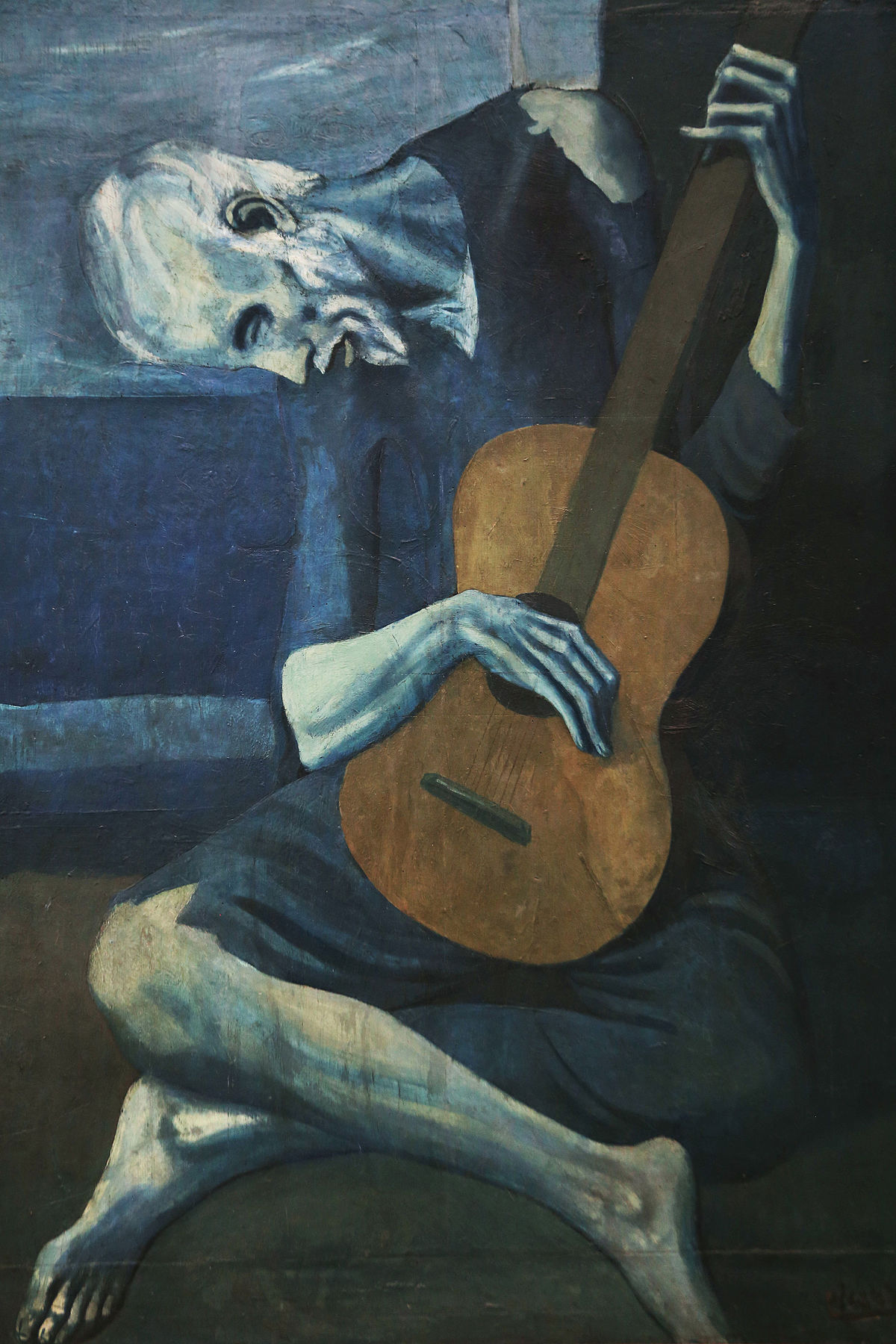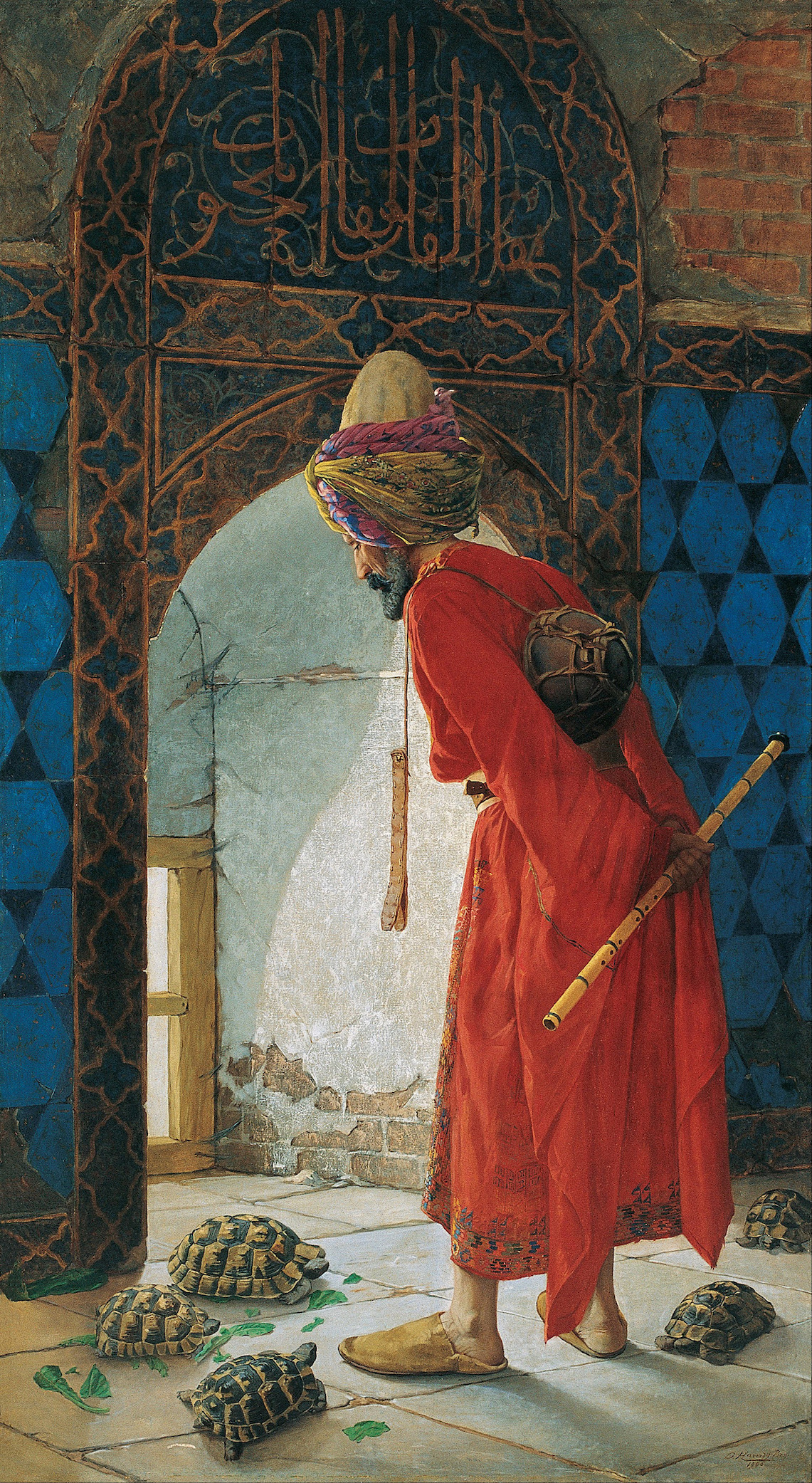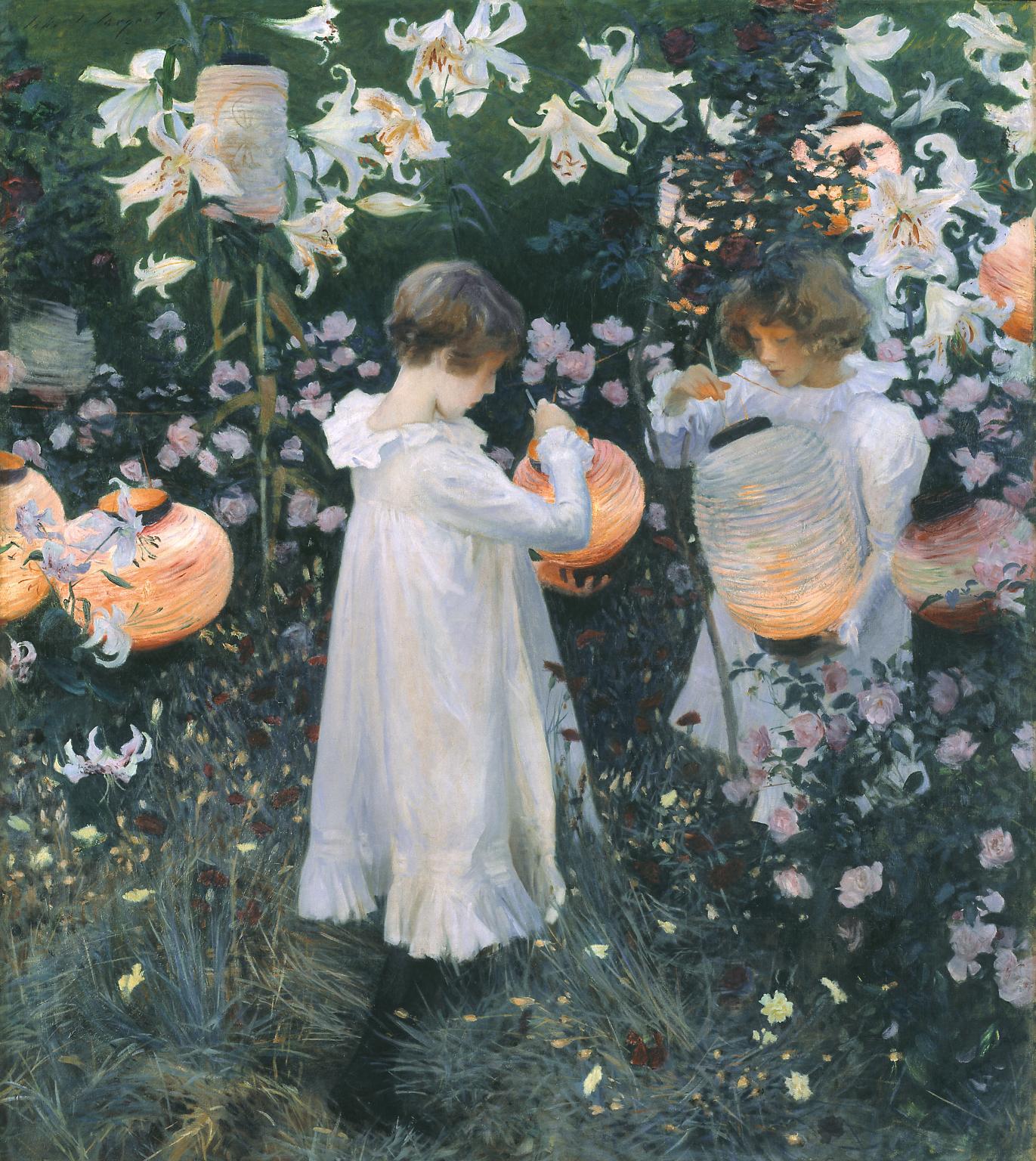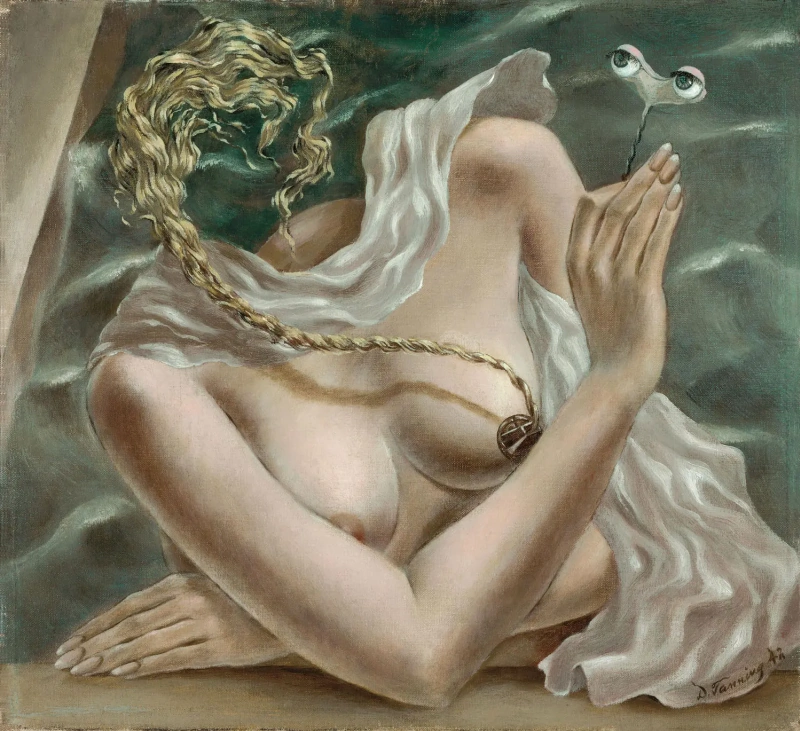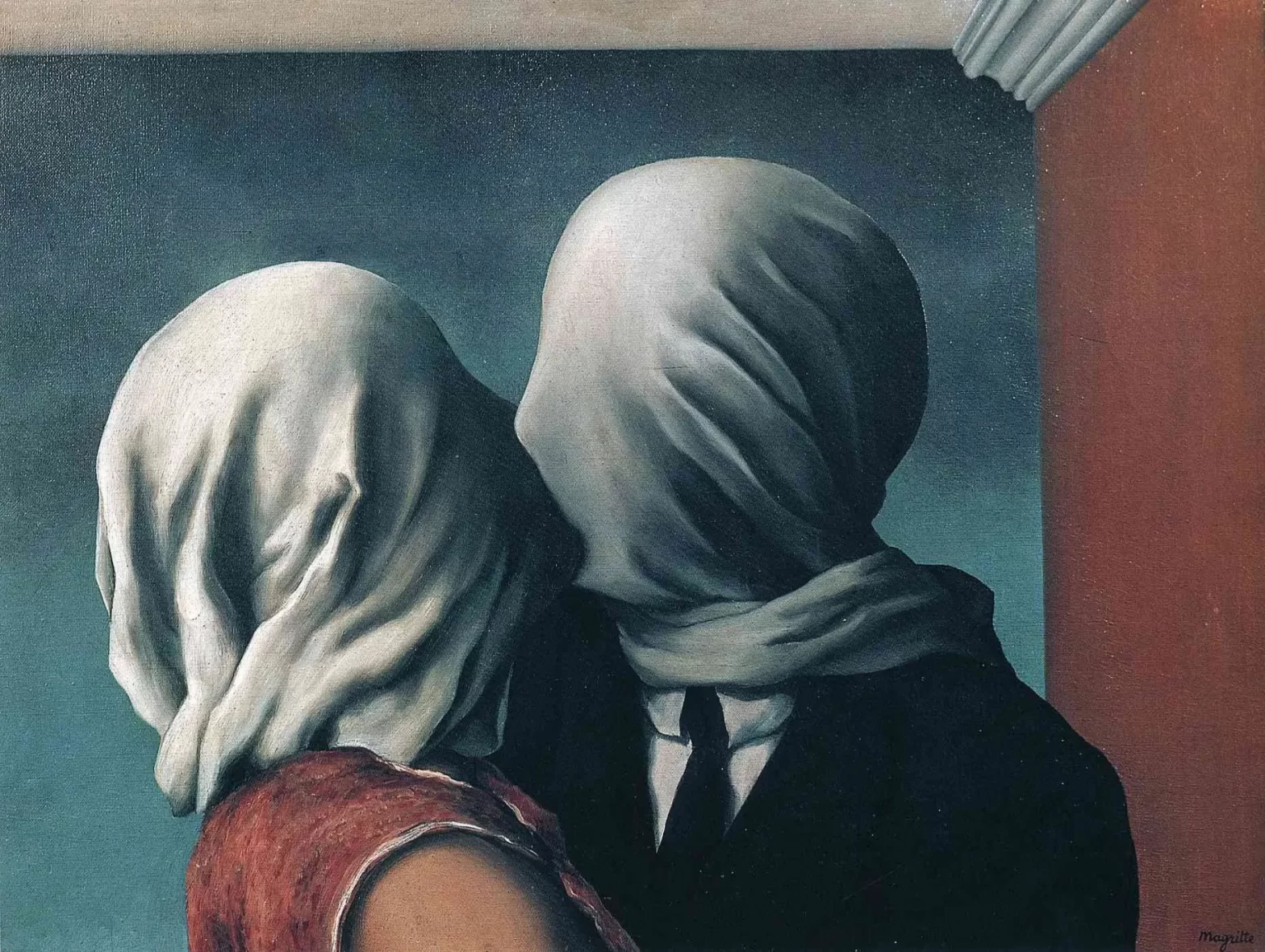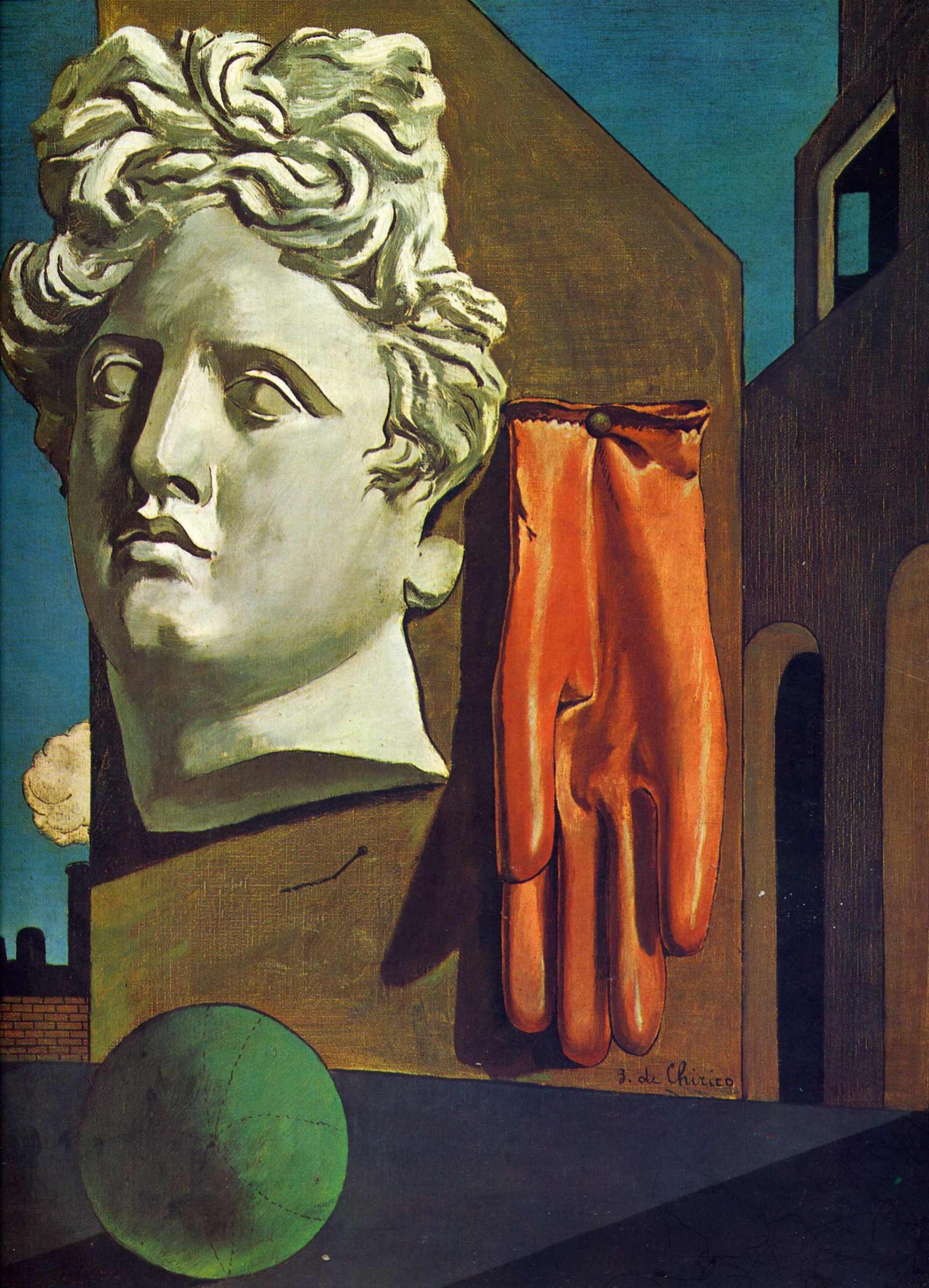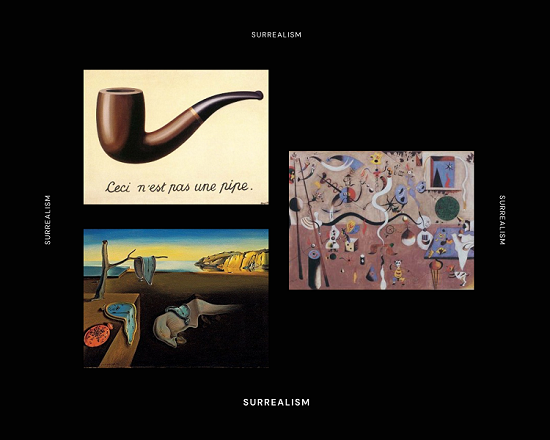The Old Guitarist by Picasso:Understanding the Artistic Genius Behind the Canvas Cubism and Surrealism The Old Guitarist, Cubism & Surrealism “The Old Guitarist” stands as a testament to the artistic genius of Pablo Picasso, a luminary in the world of modern art. Created during his Blue Period, between late 1903 and early 1904, this painting was born out of Picasso’s personal experiences in Barcelona. It was a time of profound hardship for the artist, marred by severe financial struggles and emotional turmoil. Measuring 122.9 cm x 82.6 cm and executed in oil on panel, this piece is a significant part of the Helen Birch Bartlett Memorial Collection. The Blue Period, spanning from 1901 to 1904, was a defining phase in Picasso’s career, characterized by a somber palette and themes of melancholy and despair, deeply influenced by the artist’s own life experiences. Artistic Genesis and Blue Period Pablo Picasso – The Death of Casagemas, 1901, Musée Picasso, photo credit: NC-ND 2.0 by dvdbramhall Picasso’s Blue Period was catalyzed by a series of personal tragedies, including the suicide of his close friend Carles Casagemas in 1901. This event profoundly affected Picasso, leading him to express his grief and emotional pain through his art. The color blue became a dominant theme, symbolizing the feelings of sadness and isolation he experienced. During this period, Picasso was immersed in poverty, which further deepened his empathy for the marginalized and outcast members of society. This empathy is vividly portrayed in “The Old Guitarist,” where he explores themes of poverty, loneliness, and social exclusion, using a restricted color palette dominated by blues and greens to convey the emotional weight of these themes. Symbolism and Style Details Details Details In “The Old Guitarist,” Picasso presents a haunting image of an elderly, blind guitarist. The figure is gaunt, with elongated limbs and a contorted posture, reminiscent of the works of El Greco, the 16th-century Spanish artist. The guitarist, despite his blindness and apparent poverty, is engrossed in playing his instrument. The guitar, depicted in a brown hue, starkly contrasts with the surrounding blues and greens, symbolizing a glimmer of hope and solace in the midst of despair. This use of color not only highlights the guitarist’s isolation but also his resilience. Picasso’s expertise in figure drawing and oil painting, skills honed under his father’s tutelage, is evident in the deliberate composition of the piece, following the rule of thirds to create a dynamic and emotionally charged scene. The Underlying Mystery Old sketches underneath The Old Guitarist, Pablo Picasso A fitting complement to Picasso’s work is Wallace Steven’s poem, ‘The Man with the Blue Guitar’. In this poem, Stevens articulates Picasso’s notion that art is an illusion that reveals the truth, with lines like, ‘You have a blue guitar, / You do not play things as they are’. The response in the poem, ‘Things as they are / Are changed upon the blue guitar’, serves as a metaphor for the necessity of fully embracing one’s sorrow to find healing, a theme also echoed in Denise Levertov’s ‘Talking to Grief‘. Some people speculate that Picasso drew inspiration for his piece from the renowned painting ‘Hope’ by English artist George Frederic Wallace. A unique aspect of “The Old Guitarist” is the presence of hidden images beneath the main painting, revealed through modern infrared technology and art-historical research. These underpaintings, including the image of a woman’s head and an outstretched arm, suggest that Picasso reused canvases, likely due to financial constraints. This practice offers an intriguing insight into Picasso’s artistic process, showcasing his resourcefulness and the evolution of his ideas. The discovery of these layers adds depth to our understanding of “The Old Guitarist,” revealing the complexities of Picasso’s creative journey. Cubism and Later Artistic Phases Following the introspective Blue Period, Picasso’s style underwent a significant transformation. He transitioned to the Rose Period, characterized by a warmer palette and more optimistic themes. This period was a prelude to his pioneering work in Cubism, a revolutionary art movement he developed alongside Georges Braque. Cubism, marked by its abstract geometric forms and the deconstruction of traditional subjects, represented a radical departure from conventional artistic techniques. It was an embodiment of Picasso’s belief that art should not merely imitate nature but reflect the complexities of the modern world. Surrealism and Artistic Exploration In addition to Cubism and the Blue and Rose periods, Pablo Picasso’s forays into Surrealism further demonstrate his artistic versatility and willingness to explore different realms of the subconscious. Surrealism, a movement that sought to release the creative potential of the unconscious mind, resonated with Picasso’s inclination towards imaginative and innovative expressions in art. His exploration of this style was marked by a blend of realistic detail with dream-like, often bizarre elements, which allowed him to delve deeper into themes of fantasy, desire, and the human psyche. Picasso’s surrealistic works, although not as extensively recognized as his cubist or blue period pieces, still played a significant role in his artistic evolution. This phase of his career was characterized by a more fluid and organic approach, departing from the rigid geometric structures of Cubism. He employed distortion and metamorphosis to create compelling, sometimes unsettling imagery, reflecting his deep engagement with the human condition and its myriad complexities. Composition analysis, The Old Guitarist, Pablo Picasso “The Old Guitarist” also foreshadows Picasso’s later forays into Surrealism. The distorted form of the guitarist, with elongated limbs and an ethereal quality, hints at surrealistic elements, indicative of Picasso’s evolving style. This fusion of techniques highlights his ability to break conventional artistic boundaries and explore new realms of expression. In conclusion, Picasso’s artistic journey, encompassing the introspective Blue Period, the groundbreaking Cubism, and the imaginative realms of Surrealism, showcases his extraordinary talent and adaptability. “The Old Guitarist” remains a powerful testament to Picasso’s empathy, creativity, and lasting impact on modern art. Picasso’s Artistic Legacy Pablo Picasso’s impact on the art world extends far beyond his contributions to Cubism. He was a versatile and influential… Continue reading The Old Guitarist by Picasso: Understanding The Artistic Genius Behind the Canvas
Category: Perspective
Art Appreciation: ‘The Tortoise Trainer’ by Osman Hamdi Bey
Art Appreciation:‘The Tortoise Trainer’byOsman Hamdi Bey Romanticism Digital Image Courtesy of Artsy [The Tortoise Trainer, 1906] Celebrated within the hushed halls of Istanbul’s Pera Museum, ‘The Tortoise Trainer’ by Osman Hamdi Bey beckons with a timeless allure. This painting is more than art; it’s a portal to a bygone era of the Ottoman Empire, a time of change and turmoil. Let’s unravel the captivating story behind this masterpiece! The Tortoise Trainer (1906) Digital Image Courtesy of Pera Museum [Osman Hamdi Bey, 1842 – 1910] The Tortoise Trainer (in Turkish: Kaplumbağa Terbiyecisi) is an academic oil on canvas painting by Turkish Painter Osman Hamdi Bey, with the first version created in 1906 and a second in 1907. A brief Iconography about the painter may be in order. Osman Hamdi Bey held multiple roles throughout his remarkable career. He wasn’t just an Ottoman administrator but also a man of great intellectual pursuits. His accomplishments extended beyond the canvas, as he played a pioneering role in the world of art. Additionally, Osman Hamdi was a respected archaeologist and a trailblazer in the field of museum curation in Turkey. His legacy includes the founding of the Istanbul Archaeology Museum and what is now known as the Mimar Sinan University of Fine Arts, originally called the Istanbul Academy of Fine Arts. Digital Image Courtesy of Artsy [The Tortoise Trainer, 1906] Osman Hamdi, known for frequently using photographs as models for his figurative compositions, once again employs this technique in the painting, portraying himself as a Dervish. The artwork features an elderly man dressed in traditional Ottoman religious attire: a long red garment adorned with embroidery along the hem, cinched at the waist, and adorned with yellow sahtiyan slippers for indoor wear made from Moroccan (goatskin) leather. The ensemble is topped with a Turkish turban. The anachronistic costume predates the introduction of the Fez and the spread of Western-style dress with the Tanzimat reforms in the mid-19th century. As seen above, the figure seems to hold a traditional ney flute and bears possibly a nakkare or kudüm on his back, with a drumstick hanging in front. The setting of this scene unfolds within a weathered upper chamber of the Green Mosque, known as Bursa Yeşil Camii. Here, the figure stands near a solitary window, with a slight light coming into the room. His demeanor suggests an endeavor to “train” the five tortoises positioned near his feet. However, these tortoises appear rather indifferent to his efforts, showing a preference for indulging in the green leaves scattered across the floor. Above an arched window, an inscription reads, “Sifa’al-kulûp lika’al Mahbub,” which translates to: “The healing of hearts is found in meeting the beloved.” Digital Image Courtesy of Pera Museum [Salon Exhibition Catalogue, “Tortoise Trainer” Osman Hamdi Bey, 1906] The initial version of the painting debuted at the Grand Palais in Paris back in 1906, courtesy of the Société des Artistes Français, and was titled “L’homme aux Tortues” or “Man with Tortoises.” At the time of its release, it didn’t gain widespread attention or understanding, but its significance grew substantially in the following decades as it seemed to foreshadow the Young Turk Revolution of 1908. The artwork was formerly in the collection of the businessman Erol Aksoy and was sold for US$ 3.5 million in 2004. Apart from this, the second version was more petite, dedicated to his child’s father-in-law, Salih Münir Pasha. Interestingly, Osman Hamdi’s inspiration for these artworks can be traced back 37 years before their creation when he received an issue of the travel journal Tour de Monde from his father while in Baghdad. He found an article written by Swiss diplomat Aimé Humbert, who conveys his remarkable encounters in Japan, including observations of Korean Tortoise trainers. These trainers taught tortoises to walk in a single line and even stack on top of one another on a low table, accompanied by the rhythmic beats of a small drum. It’s believed that this article served as Osman Hamdi’s initial inspiration for these works. In the 1980s, the painting found its way into the collection of journalist Erol Simavi and was later exhibited at the Sakıp Sabancı Museum in 2009. Osman Hamdi Bey created the painting during a period of significant social and political upheaval within the Ottoman Empire. At that time, the reforms initiated by Sultan Abdülhamid II had either proven ineffective or had been attributed to the increasing unrest. The Ottoman Empire, which extended across parts of the Balkan Peninsula, portions of North Africa, all of Anatolia and the Levant, and much of the Arabian Peninsula at the dawn of the 20th century, faced serious threats. These included the growing influence of nationalist movements within its borders and the incursions of foreign powers, eventually dividing the Empire among them in the aftermath of the First World War. Digital Courtesy Image of Peramuzesi [The Tortoise Trainer, Osman Hamdi Bey] The artwork currently resides in the Pera Museum, located in Turkey. The Tortoise Trainer (1906) Artwork created by Osman Hamdi Bey. Osman Hamdi Bey (1842-1910) Self-portrait of Osman Hamdi Bey in his youth. Osman Hamdi Bey (1842-1910) He is known for his multiple roles that leave such great legacies throughout his life. Salon Exhibition Catalogue (1906) Located in Grand Palais in Paris. Courtesy of the Société des Artistes Français, and was titled “L’homme aux Tortues” or “Man with Tortoises. Salon Exhibition Catalogue (1906) Located in Grand Palais in Paris – Courtesy of the Société des Artistes Français. Pera Museum, Turkey Collection of Osman Hamdi Bey’s artwork, ‘The Tortoise Trainer’. Digital Images Artsy Digital Image of ‘The Tortoise Trainer’ painting Pera Museum Digital Image of Osman Hamdi Bey Pera Museum Digital Image of Salon Exhibition Catalogue Peramuzesi Digital Image of Osman Hamdi Bey’s collection in Pera Museum, Turkey Toggle Title Toggle Content Article Sources Medium The Tortoise Trainer Google Arts and Culture The Tortoise Trainer – Osman Hamdi Bey Pera Museum Osman Hamdi Bey – The Tortoise Trainer Get Daily Art Osman Hamdi Bey –… Continue reading Art Appreciation: ‘The Tortoise Trainer’ by Osman Hamdi Bey
A brief history of John Singer Sargent’s “Carnation, Lily, Lily, Rose”
The story behind John Singer Sargent’s artwork Carnation, Lily, Lily, Rose (1885-1886) is an oil on canvas painting by American artist John Singer Sargent. The painting depicts two small children dressed in a vintage white long dress who are lighting lanterns in a garden with pink roses that seems to be spreading all over the place, with accents of yellow carnations and tall white lilies behind them. The main objects are the daughter of the illustrator Frederick Barnard – a dear friend of the artist. On the right side is Dolly Barnard (11 years old), while on the left side is Polly Barnard (7 years old). The inspiration for the unique lighting effect came during Sargent’s trip to River Thames at Pangbourne with his fellow American artist Edwin Austin Abbey in September 1885. He saw lanterns hanging among trees and lilies during the journey while boating. At that moment, he had this urge to capture the precise light level at dusk, so he painted the picture en plein air – a French term for ‘painting outdoors’ perfectly mixed with an impressionist style. He would place his easel and other tools beforehand and pose his models in anticipation of the few moments when he could paint it at a perfect time. From September to November 1885, he painted its artwork in the few minutes when the light began to turn its color – blending in perfectly, catching its delicate shades before the light faded into the evening when the sun started to sets as far to the southwest. The flowers in the garden seem like it has died and been replaced with artificial flowers as summer has turned into autumn; as expected, something would change when the seasons change. He finished this artwork the following summer at Millet’s new home nearby Broadway by the end of October 1886. The painting is dominated by green foliage, with no horizon that, in other words, seems to give a sense of depth. Carnation, Lily, Lily, Rose is set in an English garden at Farnham House on Broadway in the Cotswolds, where Sargent spent the summer with Francis David Millet around 1885, shortly after moving to England from Paris. Carnation, Lily, Lily, Rose was first exhibited in the Royal Academy’s Summer Exhibition in 1887. The painting received a critical reception from its audiences. However, it also received praises and well-deserved recognition from audiences and critics and is known as an “extremely original and daring essay in decoration.” The Royal Academy immediately purchased the painting for the British nation through Chantrey Bequest, a special trust fund established by Sculptor Sir Francis Chantrey in 1875. Royal Academy President Lord Leighton and the other Royal Academicians, including Sir Lawrence Alma-Tadema and William Quiller Orchardson, supported the acquisition. Details Artist: John Singer Sargent Title: Carnation, Lily, Lily, Rose Date: 1885 – 1886 Style: Impressionism Genre: Genre painting Location: Tate Britain, London, UK Dimension: 153.7 cm x 174 cm Oil on canvas The viewers can visit its painting at Tate Britain, London, UK. It has now become one of the gallery’s most loved paintings. Tate ↗ Reference Wikipedia ↗ Wikiart ↗ Reference Royal Academy ↗ Reference
Voltage by Dorothea Tanning
Dorothea Tanning was an American Surrealist artist who was born in Galesburg, Illinois, USA, in 1910. She was a successful commercial artist while continuing to pursue her painting. “Art has always been the raft onto which we climb to save our sanity. I don’t see a different purpose for it now“ She described most of her artwork with an exciting coefficient between the objects and its styles, which successfully caught many viewers’ attention. Her work of art was notable for its interest in actual female experience while exploring the unconscious – the inner, deepest dreams – and creativity. Most of her Surrealist artwork reveals disheveled female figures in domestic settings, depicted in a state of sensual reverie, to subvert gender expectations. In contrast, others take the more traditional route of assembling mismatched objects into strange still-lifes, to no less intriguing or disquieting effect, quite the opposite of her imagery. Tanning’s artwork and this one are featured in the Fantastic Women Exhibition. The painting is now in a private collection in Germany. Unfortunately, there is still no further details information about this artwork. Voltage Artist: Dorothea Tanning Title: Voltage Date: 1942 Style: Surrealism Subject & Object: Nudity Dimension: 28.3 cm x 30.8 cm Location: Private Collection, Germany Oil on canvas
René Magritte Les Amant The Lovers 1928
Les AmantsThe LoversRené Magritte Surrealism The Lovers, Surrealist Painting The lovers is one such painting that intrigues and holds so much mystery. It is an example of how simple artwork awakens the most complex meanings, exciting stories, and emotions. This painting was created by one of the most famous French artists, René Magritte, in 1928. It is known that most of his artworks are themed on frustrated desire, yearning for love, and craving for lust. The lovers have four variations (take a look at the paintings down below). However, the two of them are pretty well-known by viewers worldwide. One of them is painted in a close-up scene of two lovers, locked in a tight embrace, transfiguring an act of passion and intimacy into one of isolation and frustration, a frustrated desire – with faces covered in cloth. Enveloped faces were known for Magritte’s motif on his creation. In all series of these paintings, the women are entirely covered in veils which is enough to interpret passion, love, and genuine intimacy. It shows that if this is about two lovers, it can be described as “love is blind’. When two people are in love, they are so deep and passionate about their feelings that they do not notice anyone or anything around. It’s blind, it drives one’s mind crazy, yet it’s beautiful – it’s worth the risk and everything that needs to be sacrificed. Some have interpreted this artwork to depict the inability to fully unveil the essence of relationships and the difficulty of sharing its passionate and intimate moment – even with the people they considered as their close ones. Portrait of René Magritte’s Mother Some also speculated that his trauma, his tragic past, inspired this painting. At the age of 14, Magritte’s mother was committed suicide, and her body was found in the River Sambre. At that time, he witnessed her whole body being fished from the water, with her face wrapped by her wet nightgown. However, he has said it clear in one of his interviews that it has nothing to do with his past – it is simply just a painting that holds so much mystery, just like his other paintings. Another version was voiced out, as it said he was very fond of Fantômas – still, nobody knows the woman’s identity hiding her face under the mask. Les Amants (The Lovers), 1928 The lovers are situated in a room with the back wall, sidewall, and ceiling showing a bit. The color of the back fence is blue-grey with a lighter shade on the bottom half and a darker shade through the top half. The sidewall is brick red which both have darker and lighter shades. The ceiling is colored in white and has a decorative trim along the border of the wall; however, it isn’t fully colored along the perimeter of the blue-grey wall. Both figures have a whitish veil that covers their faces and necks completely. The coverings are tight against the front and top of the head and loose towards the back. The male figure wears a black suit and ties with a solid white shirt that seems to be formal. He embraced the woman who dressed in a red, sleeveless garment with white trim – tanned arms fully exposed. The man looked like he was in a dominant position relative to the woman. These two figure seems to be in an intimate atmosphere as she tilts her head up while he leans down, trying to kiss her hungrily, passionately. The way she slightly tilted her face to the left gives her lover more access to her lips and makes her lover more prominent, and reveals the distinct outline of his nose. However, if to look closer at her body position, she is leaning backward a bit. It is, for sure, provokes a mystery that quite hard to put its real meaning. The elements in this painting are the veils, the room, and the two figures. Many viewers wonder if this is a kiss of denied love or honestly and simply just a lover engaged in a romantic time together – alone. The deathlike cloth keeps the two figures at a distance, but the intimacy is there – it is as if to tell that barriers do not exist when it comes to love. The room is painted in a mysterious yet inviting setting – colored in bold colors with no windows at all. However, the lovers are the primary object; it creates an atmosphere of mystery and conspiracy, making this painting more fascinating and thought-provoking. René Magritte, Surrealist Artist Magritte’s vision in this painting is simple yet quite interesting as it involves a deep feeling, deep meaning. For Magritte himself, he wanted the viewers to have their perspective – translated its painting just by observing the whole details, concluding each meaning. Indeed, he is a genius, brilliant artist that deserves to be remembered as one of the greatest artists of all time. The lovers painting can now be viewed at the Museum of Modern Art (MOMA), New York City, USA. It remains a part of an iconic work of surrealism. Series of The Lovers The Lovers I The Lovers II The Lovers III, Private collection The Lovers IV, Private collection TRENDING TODAY René Magritte Les Amant The Lovers 1928 Unrevealed The Lovers René Magritte Colour me in fwd see my other page René Magritte Les Amant The Lovers 1928 Read More February 9, 2022 10 Timeless Surrealist Paintings You Should Know Read More October 6, 2021 Surrealist Artist Read More February 9, 2021 Surrealisme Read More January 9, 2021 stay connected Instagram Pinterest
10 Timeless Surrealist Paintings You Should Know
10 TIMELESSSURREALIST PAINTINGS YOU SHOULD KNOW Surrealism The Song of Love, Surrealist Painting Art has become a part of this universe. So many art pieces are imbued with so much history, culture, emotion, and life that even the most replica couldn’t pin down their exact essence. Up until today, there are many art lovers still searching for its original sources – here and there. The fact that experiencing an original piece in person feels like looking at the world from the same, unique vantage point of view from which the artist once saw that nobody else could. It’s an intimate experience like none other, an almost surreal synchronization of your energy combined with the artists in a perfect moment in time. One of the most bizarre, intriguing yet very fascinating styles of art began to take shape in early 1920’s. It is also the time when Surrealism began its journey. Surrealism was known for its unique and intrigue connection between the artists and their artworks as its own focus is to delve more into deeper imagery and meanings of dreams as well as the subconscious imaginations. Have you seen all these painting somewhere? Let’s find out a little story behind these artworks! 1. Salvador Dalí Dream Caused by The Flight of a Bee Around a Pomegranate a Second Before Awakening, 1944 Salvador Dalí, Surrealist Artist Salvador Dalí is best-known and is remain as one of the greatest Surrealist artist – until today. The melting clocks or The Persistence of Memory is one of Dalí’s most famous painting that he ever produced. But his artwork did not stop until then, it goes far beyond this painting. Dream Caused by The Flight of a Bee Around a Pomegranate a Second Before Awakening is an oil painting on wood. It is one of the most remarkable examples of Surrealist art. The naked body figure in the painting is Gala, Dalí’s wife and muse, floating above a flat rock in a state of peaceful mind at the sea, possibly at Port Lligat. Dream Caused by The Flight of a Bee Around a Pomegranate a Second Before Awakening, 1944 Dalí depicts two suspended droplets of water and a pomegranate, a Christian symbol of fertility and resurrection. The bee and pomegranate of the title hover below Gala’s body, while in the upper left of the painting is a fish that seems to bursts out from its pomegranate, while the tigers seem poised to attack her, as well as the riffle with a bayonet that is about to sting her in the arm. But all these are meant as a symbols of unconscious desires. Above near the horizon, is an elephant carrying an obelisk on its back strides across the brilliant blue sea on a stilted leg. This creature was inspired by Bernini’s Elephant and Obelisk in Rome’s Piazza Santa Maria Sopra Minerva. For Dalí himself, this symbolizes as war and destruction. This painting represents a mood of terror and confusion which perfectly fit for nightmarish vision. The two tigers emerge together from the fish’s mouth, with a bar that threateningly might fall on the neck, which would cause her to wake up as she senses a danger, the buzz of the bee provokes the sensation of the sting which later on will wake Gala from her restful sleep. This state of immobility and suspended animal can be related to the artist’s newfound interest in nuclear fission and atomic energy. However, dream imagery was still at the core of Dalí’s esthetics as he still had a great interest to the ideas of Psychoanalysis by Sigmund Freud. Following his theory, Dalí understood the imagery of dreams to have multiple possible symbolic meanings and created paintings like this one that explored those complexities. Often, as in Dream Caused by The Flight of a Bee Around a Pomegranate a Second Before Awakening, sexuality was a central theme in these artwork. The painting is currently on display at the Thyssen-Bornemisza Museum in Madrid, Spain. 2. René Magritte The Treachery of Images, 1929 René Magritte, Surrealist Artist This painting was created by one and only René Magritte, one of the greatest Surrealist artists of all time. Magritte was known for his unique concept and ideas which he always put such a meaningful story behind all his masterpieces. For example, The Treachery of Images. It depicts simple imagery of the pipe and contrasting statement “Ceci n’est pas une pipe” or “This is not a pipe”, it also creates a three-way paradox out of the conventional notion that objects correspond to words and images. Moreover it raises an important point on the discord between language and meaning. Magritte’s artwork is quite simple, yet it triggers startling thoughts. The Treachery of Images, 1929 The persistent tension Magritte maintained during these years between nature and artifice, truth and fiction, reality and surreality is one of greatest achievement of his art. The Treachery of Images has become one of the most iconic images of Surrealism Movement. This painting is the introduction to Pop Art style and has inspired many conceptual artists in the late 20th century. It is now on display at Los Angeles County Museum of Art (LACMA), Los Angeles, California, USA. 3. Joan Miró The Tilled Field, 1923-1924 Joan Miró, Surrealist Artist The panting is widely considered to be Miró’s greatest artwork along with his painting, Harlequin’s Carnival. It closely resembles the overall manner that depicts his surrealist visions. The Tilled Field was created as a Surrealist view of his family’s Catalan farm, located in Mont-roig del Camp, Catalonia. The Tilled Field, 1923-1924 The painting is dominated by muted tones of yellow and brown. It divides into three areas by two horizontal lines, perhaps representing the sky, sea, and earth – and the decorative scattering of multicolored animals throughout were most likely inspired by medieval Spanish tapestries. This painting is the first example of Miró’s Surrealist vision. It is littered with a… Continue reading 10 Timeless Surrealist Paintings You Should Know
Surrealist Artist
Surrealist Artists Salvador Dalí Salvador Dalí [ 1904 – 1989 ] Surrealist artists – such as Salvador Dalí, René Magritte, Leonora Carrington, Joan Miró, Yves Tanguy and many others – seek to explore the unconscious mind and dreams as a way of creating art that asserted the value of it’s both. The artists found magic and beauty beyond world in the unexpected, the unconventional, and the uncanny of their deepest thoughts by illustrating it into something that is indescribable-yet-very-fascinating collection of artworks. However, for some artists – Surrealism is also used as a way to depict dream worlds or hidden psychological tensions. The following image is one of the most famous Surrealist artist in the world. Anyone who admires and loves painting probably know the man in the picture below. Scroll down to read more! Who is Salvador Dalí? About the artist Portrait of Salvador Dalí at age 4 He is, for sure, one of the man, the master of arts, Salvador Domingo Felipe Jacinto Dalí i Domènech, known as Salvador Dalí. Certainly, he is one of the most symbolic, and most celebrated artist of the Surrealist movement of all time. He is also one of the most influential figures in modern art. Dalí was born on May 11, 1904 in Figueres, near the Pyrenees Mountains, Spain. Growing up being surrounded by natures and cultures, he found many inspiration that later on it became his key paintings as he often included the scenery that he sees around into his artworks. Dalí has laid his heart in art and found love in it. His father and his mother greatly nurtured his interest in art since he was young. Both his parents built an art studio in Cadaqués, their summer home. Landscape Near Figueras (1910) is one of the earliest known artwork by Salvador Dalí. It was painted when he was six years old. At the age of 10, he had his first drawing lesssons that soon he took an art school at the San Fernando Academy of Art in Madrid, where he experienced with impressionist and pointillist styles. However, in 1926, when he was in his year-end at the academy, he refused to be examined in the theory of art and balked at his professors during the examanation. He announced, “I am very sorry. But I am infinitely more intelligent than these three professors, and I therefore refuse to be examined by them. I know this subject much too well”. As a result of this, he got expelled before graduation. Landscape Near Figueras [ 1910 ] After leaving art school, he soon went on trip to Paris where everything started and this, is where his life-changing, his journey began. Dalí visited Pablo Picasso in his studio and found a new inspiration and ideas which is called Cubism. Cubism is an art movement that was created by Pablo Picasso and Georges Braque in 1907. The style emphasized the flat, two-dimensional surface that can be viewed from multiple angles simultaneously. Later on, he has a great interest in Futurism, where he re-created motion and show objects from multiple angles. Dalí also had an interest in Psychoanalytic concepts of Sigmund Freud. After some time, he studied the theory and consequently began using Psychoanalytic methods of mining the subconscious to generate imagery. Joan Miró, a fellow from Catalan allied to some of the French Surrealist artists – such as Jean Arp, René Magritte, and Max Ernst. They found Dalí’s artwork very captivating and also very fond of his idea, especially in Psychoanalytic theory of Sigmund Freud. They tried to apply this methods into painting and writing. At that time, the Surrealists artists – knew that Dalí was well acquainted with Freud and his great ideas about sexual repression taking the form of dreams and delusions. As soon as Dalí found out about this, he was amazed with the Surrealists attempt to capture these dreams in paint. Dalí’s first serious work in Psychoanalytic concept was Apparatus and Hand (1927), which became his inimitable painting signature. Here take a look at the artwork! Apparatus and Hand [ 1927 ] In 1928, Dalí worked with Luis Buñuel on movie industry Un Chien Andalou (An Andalusian Dog). Due to the conflicts and remarks about the context of this film, Dalí’s popularity starts to fell and causing quite a stir with the Parisian Surrealists. However in 1929, The Surrealists sent Paul Éluard and his wife Gala, along with René Magritte and his wife Georgette to visit Dalí in Cadaques. Dalí met and fell in love with Gala. The two were drawn to each other and shortly after Gala decided to left Éluard for Dalí. The fact that she was ten years older than him, he didn’t mind it and even decided to marry her in 1934 and renewed their vows in 1958. Gala became Dalí’s lifelong, soulmate, and most important muse, as well as being his wife, his greatest passion and love, also business manager. Years later, Dalí moved to Paris and was invited by ‘The Surrealist Pops’, André Breton to join the movement. Salvador Dali and his wife, Gala In the early 1930s, Dalí took Breton’s theory of ‘automatism’ concept a step further by creating his own perspective called ‘Paranoiac-critical method’, which means an artist could use their subconscious through systematic irrational thought, hallucinations, and a self-induced paranoid state to facilitate and create a work of art. It is also known as a ‘second phase’ of Surrealism. Dalí would create ‘hand-painted dream photographs’ based on what he had witnessed. Most of his artwork shows an unusual-yet-very-unique painting. Although the objects were sometimes unrelated, rather confusing, but it still painted realistically. He believed that the viewers would find a deep connection and meaning with his artwork because after all, the subconscious language is universal, and “it speaks with the vocabulary of the great vital constants that is universally echoed in every human”. Dalí used this method for almost his entire life, and his most popular, well-known artwork was The Persistence of Memory… Continue reading Surrealist Artist
Surrealisme
Surrealism Style of art Surrealism Style of Art Surrealism is more than just an artistic style – it’s an artistic movement, gesture, created by the artist itself. In 1917, the term of ‘surrealist’ was first coined by the French avant-garde poet, Guilliame Apollinaire. He used the term of it in the program notes, called the ballet Parade for Jean Cocteau and Erik Satie, along with Léonide Massine and Pablo Picasso. Guillaume Apollinaire [ 1880 – 1918 ] However, André Breton, who is known as the ‘Pope’ of Surrealism, officially founded the movement when he published Manifeste du surréalisme in 1924. Breton defined Surrealism as dictation of thought in the absence of all control exerted by reason, outside all moral and aesthetic consideration. Surrealism was a means of reuniting conscious and unconscious realms of experience completely that both dreams and fantasies joined together to the rational world in “an absolute reality, a surreality” as he called it. Breton sees the unconscious as the fountain of the imagination, which he believed that this could be attained by poets and painters. In 1925, visual artists such as Giorgio De Chirico, Pablo Picasso, Francis Picabia, and Marcel Duchamp embraced Surrealism and also were recognized in Breton’s publication, “La Révolution Surréaliste.” André Beton [ 1896 – 1966 ] Surrealist artists aimed to focus on the unconscious mind in order to unlock their dreams, inner-mind, deepest-creativity, and imagination. Since the Surrealism were well-influenced by the psychoanalysis, they believed that the rational mind suppressed the power of their expression. Therefore, Surrealism suggested that the artists should be balanced and well-aware in both reason and rationality. These techniques became known as automatism or automatic writing, encouraging spontaneity and openness to it’s artist practices. A fundamental aspect of this ‘automatism’, means that one proposes to express or to act either verbally, or any other ways, in both thoughts and images that comes from it’s unconscious minds and dreams of the artist itself. Throughout the 1920s, the artists continued to explore the Surrealist concept in art, seeking for complete creative freedom. And that’s when the first exhibition of Surrealism were showcased in 1925 at the Galerie Pierre in Paris, titled “La Peinture Surréaliste”, demonstrating the whole visual components of the movement as it displayed an artwork by Jean Arp, André Masson, Paul Klee, Man Ray, Max Ernst, Pablo Picasso, Giorgio de Chirico, Joan Miro, and many other artists. Exhibition of Surrealism [ 1925 ] Since Surrealism emphasis on creative freedom, there are numbers of techniques were formed by Surrealist painters to helped capture the thoughts of its unconscious mind. Many Surrealist artists combined different kind of artistic styles in a single work, creating an uncertain imagery that is hardly to described by the viewers, as it did not provide much explanations on it’s artwork. This style of art aims to create an artwork that made the viewers think, and none of it has a solid answer. They wanted to build a perspective, a what-do-you-see-in-this-painting on a deeper level connection between the viewers and the artwork. Therefore, it has only a few characteristic that you may notice. And that is the beauty, the fascinating concept of Surrealism style of art. Over the years, Surrealism has gotten bigger and bigger and succeeded to attract world-wide writers, artists, photographers, and filmmakers that quickly became an international movement. It has exerted huge impact on the cultural life of many countries in the interwar years until later. The peak of the Surrealist happened in 1938, Exposition Internationale du Surréalisme or the International Surrealist Exhibition at Galérie Beaux-Arts in 140 Rue du Faubourg Saint-Honoré. The Gallery was divided into three sections, featuring paintings, objects, unsually decorated rooms, and re-designed mannequins. Exposition Internationale du Surréalisme [ 1938 ] The exhibition was held by many Surrealist artists. André Breton suggested to establish a different framework for displaying the artwork by creating an enchanting vibes of Surrealism. Himself and Nusch Éluard asked Marcel Duchamp to participated and design the exhibition, although he was not officially a part of the Surrealist movement. Invitation – Exposition Internationale du Surréalisme [ 1938 ] Duchamp, the designer, chose to exhibit the artwork in a dark atmosphere. Therefore the visitors were forced to use flashlights that was handed at the entrance in order to orient themselves in the darkness; this was made to built the sense of disorientation and surprise for the visitors. Visitors carrying flashlights – Exposition International du Surrealismé [ 1938 ] Moving on to the gallery. The first section was the lobby with the installation piece called Taxi Pluvieux (Rain cab) created by Salvador Dali. The second one was Plus Belles Rues de Paris (The most beautiful streets of Paris) contains of re-arranged Surrealist mannequins which was rented from a French manufacturer, while the last section was a center room arranged by Wolfgang Paalen and Marcel Duchamp. Many objects were positioned on pedestals of different size and the room was decorated with various items, that depict to follow a dreamlike path – at times amusing, at times disturbing – displaying the context of Surreal atmosphere. The corridor led to the main hall, a central space that resembled a grotto. The artworks were hung on the wall across the gallery, with an artificial pond with real water lilies and reeds on the pool, while the floor was covered with dead leaves. It was designed and created by Wolfgang Paalen. A thousand two-hundred of coal bags were hanging from the ceiling that were stuffed with newspaper but designed to leak coal dust on the visitors underneath. There were also four beds positioned in the corner of the room covered in satin quilts explicitly invited to abandon reality and symbolically enter the space of dreams, while in the middle stood a lit iron brazier that represent the unconscious. The sounds of cries, hysterical laughter and marching soldiers was played and filled the rooms through a loudspeaker. It increased the immersive, unsettling effect of the environment. The main hall – Exposition Internationale du Surréalisme [ 1938… Continue reading Surrealisme
